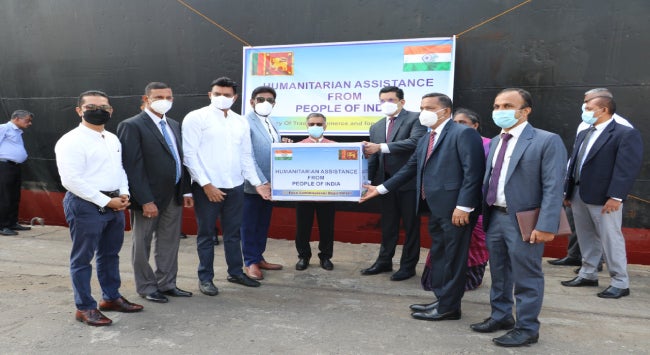Summary
In the 2024/25 Indian budget, New Delhi has increased aid to some of its neighbouring countries while reducing for others. India maintains that its policy towards its neighbours, including aid, is largely non-reciprocal.
Aid is a useful tool of foreign economic policy. Many studies, such as the one by James Raymond Vreeland, Valentin Lang, B Peter Rosendroff and Axel Dreher, show that powerful countries use aid to “buy votes at the United Nations Security Council (UNSC)”. The study adds that countries that vote with the United States (US) when serving on the UNSC receive more financial assistance from the US or US-dominated global financial institutions. China also uses aid to drive its political objectives. The major global powers and even regional powers/hegemons/influencers use aid to keep the extra-regional actors away from the region.
Like many other economically well-off states, India also provides aid to various countries, including its neighbours. The aid India provides, especially to its neighbours, is in line with the ‘Neighbourhood First’ policy adopted by the government under Narendra Modi. India’s ‘Neighbourhood First’ policy is aimed at “enhancing physical, digital and people to people connectivity across the region, as well as augmenting trade and commerce”. India’s External Affairs Minister S Jaishankar stated that this policy has “helped in building infrastructure, extending credits, and making provisions for essential supplies in the region”. Further elaborating it, in an interview with NDTV, in January 2024, Jaishankar said that “ties with [the] neighbours [are] not [only] transactional”, New Delhi’s friendship with its neighbours is based on the sentiment of the ‘Neighbourhood First’ policy. Before this policy was articulated in 2015, different labels were used to described India’s ties with its neighbours and these were equally effective.
In the 2024/25 budget presented by the Indian Finance Minister Nirmala Sitharaman on 23 July 2024, India’s total aid amounts to ₹4,883.56 crores (S$78 billion), which is to be distributed among a number of countries. These include Bhutan, the Maldives, Afghanistan, Bangladesh, Nepal, Sri Lanka, Myanmar, Mongolia, Mauritius, Seychelles, the Eurasian countries, the Latin American countries, the African countries and other developing countries, as well as to be used for disaster relief activities and to develop Chabahar Port in Iran. In the neighbourhood, except Pakistan, the Indian budget has allocated aid funds to all countries.
Table 1: Aids to the South Asian Countries

Source: Ministry of Finance, Government of India “Budget Documents for 2024-2025”, https://www.indiabudget.gov.in/ and https://www.indiabudget.gov.in/doc/eb/sbe29.pdf
The amount of aid largely depends on the nature of bilateral ties India currently shares with its neighbouring countries. Like in the past, much more aid funds have been committed to Bhutan than the other countries in the region. India and Bhutan share close ties. However, Thimphu’s engagement with Beijing on the boundary issue between 2021 and 2023 concerned New Delhi. Like Bhutan, Bangladesh, under the political leadership of Sheikh Hasina, has forged close ties with India. However, spreading political anger against Hasina, as expressed after she won the 2024 general elections, has also put India in a tough situation. Many in Bangladesh believe that India’s help made Hasina’s win possible. Hence, in the days of the post-January elections, the ‘India Out’ campaign has gained pace in Bangladesh. Sri Lanka is also close to India. During the economic crisis in Sri Lanka in 2022, India was the first country to extend financial assistance in dealing with the situation.
India-Nepal ties largely depend on the party leading the government in Kathmandu. An unnatural coalition of the Communist Party of Nepal (Unified Marxist-Leninist) and the Nepali Congress now rules Nepal. The former is labelled ‘pro-China’ while the latter is considered ‘pro- India’. India’s relations with the Maldives changed with the change in the country’s president. Following the defeat of Ibrahim Mohamed Solih in the 2023 presidential elections, the political distance between Malé and New Delhi increased. The current president, Mohamed Muizzu, is largely considered a ‘pro-China’ leader.
India is still in a dilemma about engaging Taliban-ruled Afghanistan. India extended assistance to Afghanistan after an earthquake in the country in 2022. Further, in 2024, an Indian delegation participated in the Regional Cooperation Initiative in Kabul. On this participation, India’s Ministry of External Affairs stated that Indian diplomats have been engaging with the Taliban in “various formats”.
India’s engagements with its neighbours, as Jaishankar said, have been largely based on New Delhi’s policy of non-reciprocity. However, increasing political challenges in the neighbouring countries and the region have made India cautious. Such caution often reflects in the amount of aid funds given by India gives to its neighbours as part of its budget.
. . . . .
Dr Amit Ranjan is a Research Fellow at the Institute of South Asian Studies (ISAS), an autonomous research institute at the National University of Singapore (NUS). He can be contacted at isasar@nus.edu.sg. The author bears full responsibility for the facts cited and opinions expressed in this paper.
Pic Credit: Twitter
-
 More From :
More From :
-
 Tags :
Tags :
-
 Download PDF
Download PDF



